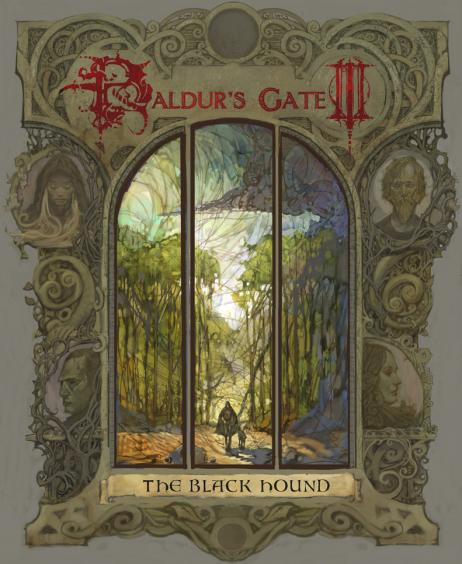The Black Hound Interview
Article Index
Page 1 of 3
Sometime in 2000 or 2001, Black Isle Studios began development of a new Dungeons & Dragons RPG entitled "The Black Hound", though those of us who visited the Interplay forums on a regular basis knew the game by "Jefferson" or "FR6." Sporting a made-from-scratch engine, the ill-fated title would eventually be "forced" to inherit the Baldur's Gate III name before finally being cancelled in 2003 when Interplay lost the rights to use the Baldur's Gate brand name. A lot of blood, sweat, and tears went into the title before its cancellation, though, so lead designer Josh Sawyer has taken it upon himself to resurrect it as a Neverwinter Nights 2 module. To learn more about the original incarnation of The Black Hound, as well as the upcoming module with the same name, we spoke directly to the source. GB: It is largely believed that "Jefferson" and "FR6" were codenames used by Black Isle Studios to represent Baldur's Gate III: The Black Hound. Now that BIS is no longer in existence, are you able to confirm that BG3 was officially in development and that "The Black Hound" was going to be its subtitle?
Josh: The Black Hound was its working title when we stopped, with the "BG3" added on at the front because Interplay could only make PC D&D games with the names Baldur's Gate and Icewind Dale in the title. It actually had nothing to do with the Baldur's Gate series.
GB: When did development of The Black Hound actually begin at Black Isle Studios and how large was the team working on it?
Josh: It's hard to remember exactly when it started, but I believe it was around late 2000 to early 2001. Development was concurrent with Icewind Dale: Heart of Winter, though only a very small team was working on The Black Hound during that period. In truth, TBH did not have a full development team until after the end of Icewind Dale 2.
GB: Why did Interplay ultimately decide to shut down The Black Hound? How much development time was left on the game at the time it was cancelled?
Josh: I'm not sure how much I can say definitively about why they shut down the project, but "coincidentally" Interplay lost the rights to use the Baldur's Gate brand name on PC immediately prior to canceling the project.
GB: Was the third installment going to continue the Child of Bhaal storyline in some manner? How did it pick up after the destruction (or absorption) of Bhaal's essence at the end of Throne of Bhaal?
Josh: For a while, TBH (which was internally called FR6 and externally called Jefferson) was a Baldur's Gate title, though the only things the project had in common with BG titles were a) a D&D ruleset b) the Forgotten Realms setting and c) a party of companions. The Baldur's Gate storyline and characters were never referenced.
GB: You've previously stated that the game was being built with an entirely new engine. Why did you not want to use the Infinity Engine that powered the first two BG installments? What enhancements would we have been treated to in this new engine?
Josh: The Infinity Engine was already being used quite extensively (to put it mildly) at Black Isle. We saw what BioWare was doing with Aurora, and we really wanted to make our own 3D engine that had better static lighting, more modular game rules, and a more extensible equipment system (among other things).
Our engine was over engineered in many ways, occasionally to our detriment. Our static lighting looked fantastic, but the pipeline for getting levels built and lit was very error prone. Our game logic was constructed very carefully to allow for virtually anything that D&D rules allow. On the Icewind Dale series, we were often blocked during implementation by engineering decisions that prevented us from implementing a given item, spell, special ability, etc. We really wanted to avoid that on TBH. But the process for building effect trees could be troublesome due to the sheer number of options.
On the graphics side of things, we had great character and "monster" customization systems. Without going into excessive detail, both systems allowed for a large amount of character variety. The monsters had it particularly good. On one of our mine levels, over 60 goblins populated the level and each one had a unique appearance, though the collective "goblin mesh" took up a relatively small memory footprint. The visual effects system was also powerful. Our artists created some truly spectacular visual effects for spells, weapons, and special attacks.


